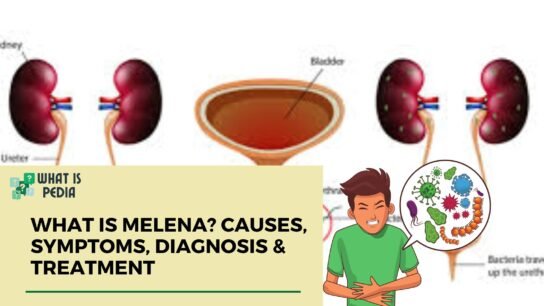1. Introduction of Leukemia
Definition: What is Leukemia Disease?
Leukemia is a type of cancer that affects blood-forming tissues, including the bone marrow and the lymphatic system. It leads to an abnormal increase in white blood cells, which do not function properly, thereby compromising the body’s immune system.
Brief History and Discovery of Leukemia
Leukemia was first identified in the 19th century by French physician Alfred Velpeau and later studied in detail by Rudolf Virchow. Over the years, medical advancements have led to the development of various treatments, including chemotherapy, radiation therapy, and bone marrow transplants.
How Leukemia Affects the Body
Leukemia disrupts the normal production of blood cells. Healthy bone marrow produces red blood cells, white blood cells, and platelets in a balanced manner. In leukemia, abnormal white blood cells (leukemia cells) multiply uncontrollably, crowding out normal cells and leading to anemia, infection, and bleeding disorders.
Overview of Leukemia Cells and Their Impact on Health
Leukemia cells do not function like normal white blood cells. They fail to fight infections and instead accumulate in the bone marrow, lymph nodes, and other organs, leading to complications such as fatigue, weight loss, and recurrent infections.
2. Understanding Leukemia
What Are Leukemia Cells and How They Differ from Normal Blood Cells?
Leukemia cells are immature or abnormal white blood cells that do not develop properly. Unlike normal white blood cells that help fight infections, leukemia cells do not perform their function, leading to immune system failure.
Role of Leukemia Bone Marrow in the Production of Abnormal Cells
The bone marrow is responsible for producing blood cells. In leukemia, the bone marrow produces excessive amounts of defective white blood cells, which crowd out healthy blood cells, leading to a weakened immune system and other health problems.
The Connection Between Leukemia and the Immune System
A weakened immune system is a hallmark of leukemia. Since leukemia cells do not fight infections effectively, patients become more susceptible to illnesses. Moreover, treatments like chemotherapy further suppress the immune response, making infection control crucial.
3. Leukemia Classification
What Is Leukemia Classification?
Leukemia is classified based on its progression and the type of white blood cell it affects. It can be either acute (rapid progression) or chronic (slow progression), and it can affect lymphoid or myeloid cells.
Difference Between Acute and Chronic Leukemia
- Acute Leukemia: Develops quickly and requires immediate treatment.
- Chronic Leukemia: Progresses slowly and may not show symptoms initially.
How Leukemia Is Classified Based on Cell Type
- Lymphoid Leukemia: Affects lymphocytes, a type of white blood cell.
- Myeloid Leukemia: Affects myeloid cells, which produce red blood cells, platelets, and some white blood cells.
4. Types of Leukemia
Acute Lymphoblastic Leukemia (ALL)
Most common in children, ALL progresses rapidly and affects lymphoid cells.
Acute Myeloid Leukemia (AML)
AML is more common in adults and affects myeloid cells, leading to the rapid growth of abnormal white blood cells.
Chronic Lymphocytic Leukemia (CLL)
CLL primarily affects older adults and progresses slowly, often without symptoms in the early stages.
Chronic Myeloid Leukemia (CML)
CML is caused by a genetic mutation (Philadelphia chromosome) and progresses in phases.
Rare Types of Leukemia
Other types include hairy cell leukemia, T-cell prolymphocytic leukemia, and large granular lymphocytic leukemia.
5. Leukemia Symptoms
Early Signs and Common Leukemia Symptoms
- Fatigue
- Frequent infections
- Unexplained weight loss
- Easy bruising and bleeding
- Swollen lymph nodes
How Symptoms Vary in Different Types of Leukemia
- Acute leukemia presents sudden symptoms.
- Chronic leukemia symptoms develop gradually.
Importance of Early Detection in Leukemia Disease
Early diagnosis increases treatment effectiveness and improves survival rates.
6. Causes and Risk Factors of Leukemia
Genetic and Environmental Causes of Leukemia Disease
- Genetic mutations
- Exposure to radiation
- Chemical exposure
Role of Radiation and Chemicals in Leukemia
Prolonged exposure to high radiation and toxic chemicals increases leukemia risk.
Family History and Lifestyle Risks
- Family history may increase susceptibility.
- Smoking and poor diet can contribute to leukemia development.
7. Diagnosis and Tests for Leukemia
How Leukemia Is Diagnosed
Doctors use blood tests, bone marrow biopsies, and imaging techniques.
Blood Tests, Bone Marrow Biopsy, and Imaging Techniques
- Complete Blood Count (CBC): Checks white blood cell levels.
- Bone Marrow Biopsy: Examines bone marrow samples.
- MRI and CT Scans: Identify leukemia spread.
Importance of Early Diagnosis
Timely detection allows for better treatment options and improved prognosis.
8. Treatment and Management of Leukemia
Chemotherapy and Radiation Therapy
- Chemotherapy: Uses drugs to kill leukemia cells.
- Radiation Therapy: Targets leukemia cells in specific areas.
Bone Marrow Transplant for Leukemia Patients
Replaces diseased bone marrow with healthy stem cells.
Targeted Therapy and Immunotherapy
- Targeted Therapy: Attacks specific leukemia cell proteins.
- Immunotherapy: Boosts the body’s immune system.
9. Living with Leukemia and Prevention
Coping Strategies for Leukemia Patients
- Healthy diet
- Regular exercise
- Emotional support
Can Leukemia Be Prevented?
While leukemia cannot always be prevented, reducing exposure to risk factors can help.
Lifestyle Changes to Reduce the Risk
- Avoid smoking
- Minimize chemical exposure
- Maintain a balanced diet
10. Conclusion of Leukemia
Summary of What Is Leukemia Disease
Leukemia is a blood cancer that affects the bone marrow and immune system.
Importance of Awareness and Early Treatment
Raising awareness can help in early detection and treatment.
Future Research and Advancements in Leukemia Treatment
Ongoing studies focus on gene therapy, improved medications, and personalized treatment plans.
Read More: Tetanus: Causes, Symptoms, Prevention & Treatment of Lockjaw Infection







